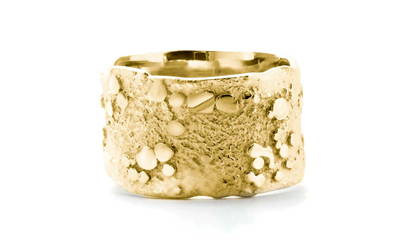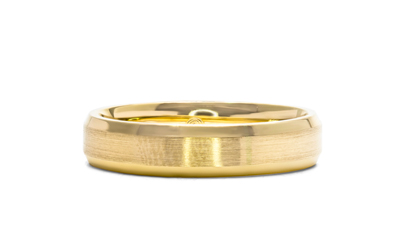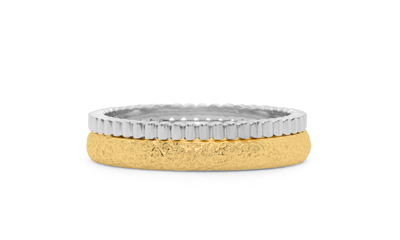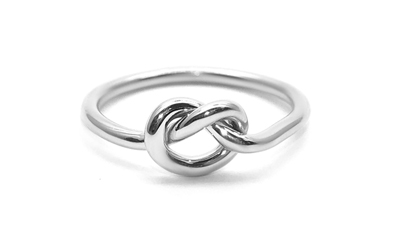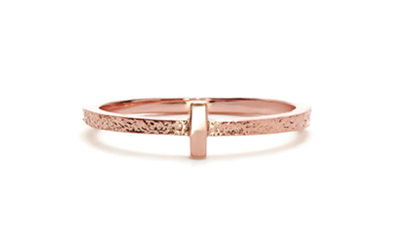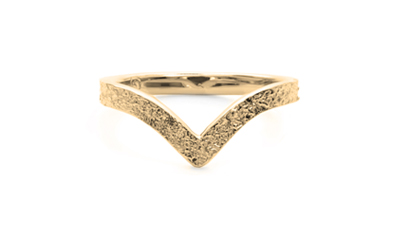
The advantages of recycled gold and eco-responsible gold
Recycled gold is gold removed and reclaimed from various sources like antique gold jewelry. Eco-responsible gold, for its part, is extracted from mines while respecting strict environmental and social protection standards. Choosing recycled and eco-responsible gold jewelry is an act of environmental responsibility. This contributes to the creation of sustainable and ethical jewelry, minimizing ecological impact and supporting mining communities. Opting for such materials when purchasing jewelry reflects an ecological conscience and a commitment to the preservation of our planet.
Environmental impact of recycled gold
Recycled gold significantly reduces environmental impact compared to traditionally mined gold. By opting for gold recycling , we contribute to reducing the ecological footprint linked to mining which often involves intensive use of water and chemicals as well as major disruption of ecosystems. For example, to produce a single gold ring, you typically need to extract 20 tons of earth and use 1,400 liters of water. These are very thought-provoking figures. On the other hand, recycling gold requires very little use of our natural resources.


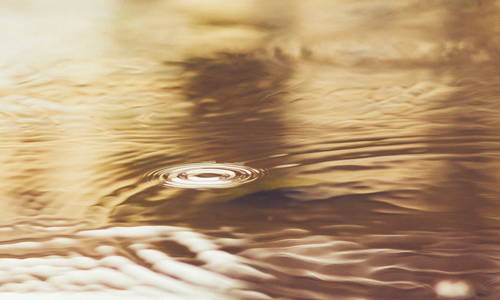
This second life that we give to old jewelry is in tune with the times since it aligns with a greater awareness of preserving our earthly resources. The benefits of recycled gold are therefore doubled: they allow you to create magnificent jewelry while minimizing their environmental impact. In short, choosing recycled gold jewelry is like giving a gift to the Earth, while remaining chic!
Comparison with traditional gold
Traditional gold vs recycled gold is a bit like two brothers with opposite personalities. Traditional gold, extracted directly from the earth, has a heavier ecological impact, meaning it requires a large amount of water and energy, not to mention the damage to ecosystems. On the other hand, its brother, recycled gold, is the champion of sustainability. It is recovered from existing jewelry or other gold objects, which considerably reduces its ecological footprint. Concerning the purity of recycled gold, don't be jealous. It can achieve the same quality as traditional gold. In the Canadian gold market, recycled gold is gaining popularity, not only for its ecological virtues but also because it is often less expensive.
Let's take the story of Madame Sirois, a jewelry enthusiast. A few years ago, she inherited an old gold ring from her grandmother, a piece of jewelry steeped in history, but a little old-fashioned for her taste. Instead of buying a piece of jewelry with traditional gold, she chose to recycle the gold from this ring to create a new one. This process not only preserved family memories, but also helped reduce the ecological impact of gold, thus avoiding the extraction of new material. The finished ring, equal in purity and brilliance to traditional gold, became a treasure in two ways: A tribute to his family heritage and a gesture towards environmental sustainability.

Gold recycling process
- Gold recycling techniques start with treasure hunting; the recovery of spent gold and forgotten jewels, real nuggets hidden in our drawers.
- Once collected, this loot enters the gold processing phase. The pieces are melted in a crucible, at a temperature worthy of a miniature volcano, to separate the gold from other materials.
- Then, like a modern alchemist, we purify the molten gold to restore its former shine. This process is called refining and it ensures that the recycled gold is as pure as its mined cousin. Finally, this precious metal is ready for use.
- After its metamorphosis into purified gold, it enters the jewelers' workshop. It is meticulously crafted, cut, hammered and shaped into new jewelry, perhaps an engagement ring or a pendant to celebrate an anniversary.
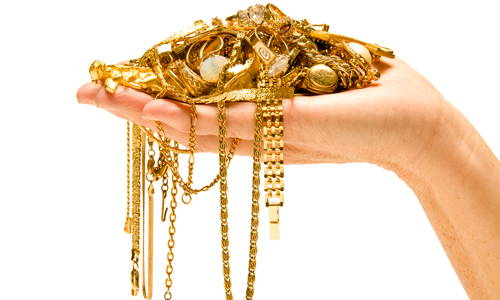
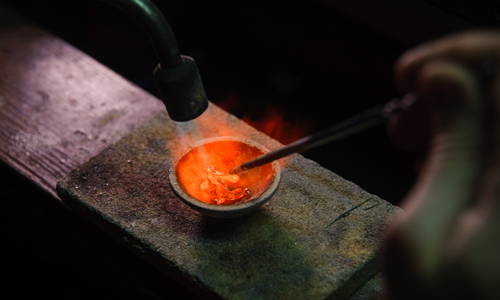

This life cycle of gold , from old to new, illustrates the beauty of recycling where each gram of recycled gold tells not only its past story but also that of its future in new creations.
Trends and innovations in ethical jewelry
In the glittering world of ethical jewelry , innovations shine brightly! Avant-garde jewelers are embracing recycled gold, transforming old materials into statement jewelry, as if Cinderella swapped her glass slippers for shoes made from recycled materials. Ethical gold rings are no longer only a symbol of romantic commitment but also a pact with our planet. Designers even go so far as to offer modular jewelry where the customer can transform, for example, earrings into pendants, thus increasing the lifespan and versatility of the jewelry.
In addition, eco-responsible certification is gaining momentum, assuring consumers that every carat contributes to environmental well-being. Designers are innovating with bold designs, marrying old and new, where a ring can tell a story as rich as its provenance. These jewels are not just accessories, proving that ethics and elegance can coexist with unrivaled brilliance.
Choosing recycled and eco-responsible gold jewelry
Opting for recycled gold jewelry is a choice that combines elegance and environmental awareness. When you choose an ethical gold engagement ring, wedding ring or recycled gold earrings, you're doing much more than just buying a piece of jewelry. You are taking part in a sustainable fashion and responsible jewelry movement.
Using recycled gold in jewelry making significantly reduces environmental impact. By avoiding mining, you help reduce the carbon footprint and preserve valuable natural resources. This also supports fair trade since the recycling of precious metals promotes fairer and more respectful business practices.
Choosing eco-responsible gold jewelry also means adopting sustainable luxury. It's a way to reconcile your love for beautiful things with your ecological responsibility. Your jewelry becomes symbols of your commitment to a greener future, reflecting not only your personal style, but also your values. Flamme en rose jewelry shares these values and requires Fairmined certified gold when it makes jewelry with newly mined gold.
By opting for green jewelry, you are encouraging ethical practices in the jewelry industry. You invest in pieces that have history, character and deeper meaning. Each purchase becomes an act of support for an industry more concerned with the environment and future generations.
We therefore invite you to explore the world of ethical jewelry. Whether for a special occasion or to add a touch of lasting sparkle to your everyday life, choosing recycled gold jewelry is a step towards a more responsible and vibrant world. Discover the charm and purity of our recycled gold jewelry and our creations with laboratory diamonds, or be amazed by our engagement rings adorned with moissanite, a choice that combines aesthetics and ethics. Join the green jewelry movement and make your next jewelry purchase a meaningful investment that aligns with your values.
FAQ - Frequently Asked Questions
1. What are the benefits of recycled gold?
The benefits of recycled gold are multiple and significant, both for the buyer and for the environment. Here are six that will convince you of their importance.
- Ecological responsibility: Choosing recycled gold contributes to increased environmental awareness. This reduces environmental impact by avoiding mining, which is often associated with high water and energy consumption, as well as damage to ecosystems.
- Reduced Carbon Footprint: Producing recycled gold requires less energy than mining new gold, which contributes to a significantly reduced carbon footprint.
- Supporting Fair Trade : Recycled gold supports fair trade practices by promoting the reuse of existing materials which is often fairer to the communities involved in the recycling process.
- Sustainable luxury: Recycled gold jewelry offers a sustainable luxury option for environmentally conscious consumers. They allow you to enjoy the beauty and quality of gold without compromising ethical values.
- Maintained Quality and Purity: Recycled gold maintains the same quality and purity as newly mined gold. Modern refining techniques ensure that the recycled gold is of high quality, ideal for luxury jewelry like engagement rings, wedding rings and earrings.
- Contribution to a sustainable world: By choosing recycled gold jewelry, consumers are actively participating in a sustainable fashion movement, choosing options that respect the environment.
In summary, choosing recycled gold represents a wise and conscious choice, offering both ecological and aesthetic advantages.
2. What is the difference between recycled gold and ethical gold?
Recycled gold and ethical gold, while similar in their focus on environmental responsibility, are distinct in their origins and processes.
- Recycled Gold: As mentioned in previous texts, recycled gold comes from existing sources such as antique jewelry or other gold products already in circulation. The recycling process involves collecting, melting and purifying this gold to reintroduce it into the jewelry life cycle. The major advantage is the reduction of ecological impact, notably by avoiding mining, which contributes to a reduced carbon footprint and sustainable mode.
- Ethical Gold: Ethical gold, on the other hand, refers to gold that is newly mined but under conditions that meet strict standards of ecological and social responsibility. This includes conflict-free extraction, respect for workers' rights and mining practices that minimize environmental impact. Ethical gold is often certified by various organizations to ensure its adherence to these high standards.
In sum, both types of gold share a common commitment to sustainability, fair trade and sustainable jewelry.
3. Can we visually differentiate recycled gold from traditional gold?
No, it is not possible to visually differentiate recycled gold from traditional gold. Once recycled gold has undergone the purification and refining process, it achieves the same purity and quality as newly mined gold. Jewelry made with recycled gold, whether engagement rings, wedding rings or earrings, has the same shine, luster and appearance as jewelry made with recycled gold. traditional gold.
This undifferentiated level of quality is essential in the context of sustainable jewelry and affordable luxury. By choosing recycled gold, consumers support environmentally friendly and fair trade practices, without compromising on the aesthetic appearance or quality of their jewelry. So, while contributing to ecological responsibility and reducing the carbon footprint, jewelry lovers can still enjoy the beauty and luxury that gold offers, whether recycled or traditional.
Get an online consultation with one of our jewelers today.

